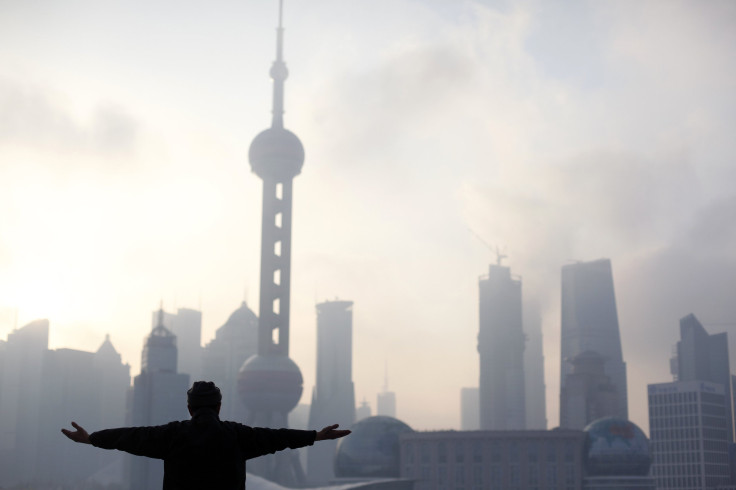China August Economic Data Preview: Inflation, Trade, Industrial Production, Investment, Bank Lending

China’s economic prospects appear to be brightening after the government rolled out measures to support growth, bolstering markets’ confidence in the country’s recovery amid the turmoil of some emerging markets that have been severely hit by capital flight.
There was tentative evidence early in the summer that China’s economic slowdown had bottomed out. Signs of a rebound became much clearer in July’s data, with a strong pickup in industrial production and a rebound in trade.
The upbeat August manufacturing data suggest that conditions have continued to improve. An official Purchasing Managers’ Index for manufacturing hit a 16-month high in August, while a similar index from HSBC and Markit showed the biggest gain in three years, according to data released over the weekend.
Attention now turns to the raft of data for August due from this weekend, with investors looking to figures for trade, inflation, industrial output, fixed-asset investment, retail sales, and money supply to further gauge the health of the world’s second-largest economy.
The Chinese economy expanded 7.5 percent in the second quarter from a year ago, extending the longest streak of sub-8 percent growth in at least two decades. In addition, the country recently revised its 2012 GDP calculations, shaving 38 billion yuan ($6.2 billion) off last year’s output. In other words, China’s economy grew only 7.7 percent last year from 2011, compared with the original calculation of 7.8 percent. But that’s still higher than the government’s 7.5 percent growth target. And Chinese Premier Li Keqiang is confident that the country will hit that mark again this year, accord to a report in Tuesday’s state-run Shanghai Daily.
“The fundamentals of the Chinese economy are sound,” Chinese President Xi Jinping said in remarks reported by state news agency Xinhua. “The growth rate could have been higher had we continued with the past development model.”
But China would “rather bring down the growth rate to a certain extent in order to solve the fundamental problems” hindering long-run development, Xi said.
A number of Street economists in the past two weeks revised up their forecasts for the second half of this year to 7.6 percent or 7.7 percent year-on-year, from around 7.3 percent.
August Data Outlook
Sept. 7 (10:00 p.m. EDT) – Trade Balance: Growth in Chinese exports and imports rebounded in July, reversing a steep fall in June. But the better-than-expected figures once again raised doubts about the reliability of these trade statistics. The most important reason to support the skepticism is a consistently massive discrepancy between China's exports to the U.S. and U.S. imports from China.
Economists polled by Reuters expect exports for August to have grown 6 percent from a year ago, compared with a gain of 5.1 percent in July. Imports probably rose by 11.3 percent, following a 10.9 percent rise in July. That would produce a monthly trade surplus of $20 billion.
Sept. 8 (9:30 p.m. EDT) – Consumer Price Index and Producer Price Index: Consumer price inflation was unchanged in July. Prices of both vegetables and pork increased, but the rise was offset by a decline in fruit prices. The daily data suggest that these trends continued in August.
Mark Williams, chief Asia economist at Capital Economics, noted that vegetable prices were rising much faster a year ago, which implies that year-over-year inflation in vegetable prices will have fallen, dragging food inflation down. But with the favorable base effect fading and pork prices still rising, the drop in food inflation should prove short-lived. The annual change in the consumer price index is seen slowing to 2.6 percent in August from 2.7 percent in July, according to the Reuters poll. CPI has held between 2.0 percent and 3.2 percent in annual terms so far this year, well below the government target of 3.5 percent. PPI is forecast to ease to 1.8 percent in August, from July's 2.3 percent.
Sept. 10 (1:30 a.m. EDT) – Industrial Production, Fixed-Asset Investments and Retail Sales: Industrial production accelerated in July and is projected to have picked up further in August. The Reuters survey shows that factory output is expected to have grown 9.9 percent year-over-year, matching the January/February figure as biggest increase this year.
“So far, the rebound has been led by heavy industry and driven by investment, which we expect to be reflected in August’s fixed asset spending data,” Williams said. Fixed-asset investment probably grew 20.2 percent in the first eight months of 2013 from a year earlier, after a 20.1 percent rise in the first seven months.
“The recovery in economic data is largely due to policy shift since July,” said Haibin Zhu, chief China economist at JP Morgan in Hong Kong, in a note.
The State Council now openly supports investment in certain sectors, and effective investment is considered as a key component in stabilizing economic growth. Beijing has increased this year’s railway investment target from 650 billion yuan to 690 billion yuan and has raised the solar energy installation target to 35 gigawatts by 2015. In addition, 80,000 kilometers of urban town gas pipeline and 100,000 kilometers of heating pipeline are expected to be renovated by the end of 2015. Economists believe these moves will likely drive a further expansion in fixed-asset investment in the coming months.
Meanwhile, there is little sign that consumption demand, the key to rebalancing the economy, is picking up. A Reuters review of first-half earnings at more than 20 Chinese retailers found they were not convinced the economic slowdown had bottomed out.
Sept. 13 (TBD) – Bank Lending: Bank loans for July were stronger than most had expected, with year-over-year growth of outstanding loans edging up for the first time since April. Economists expect new bank loans to have reached 700 billion yuan in August, nearly unchanged from July's level, while growth of M2 money supply likely have edged down to 14.4 percent from July's 14.5 percent.
© Copyright IBTimes 2024. All rights reserved.






















